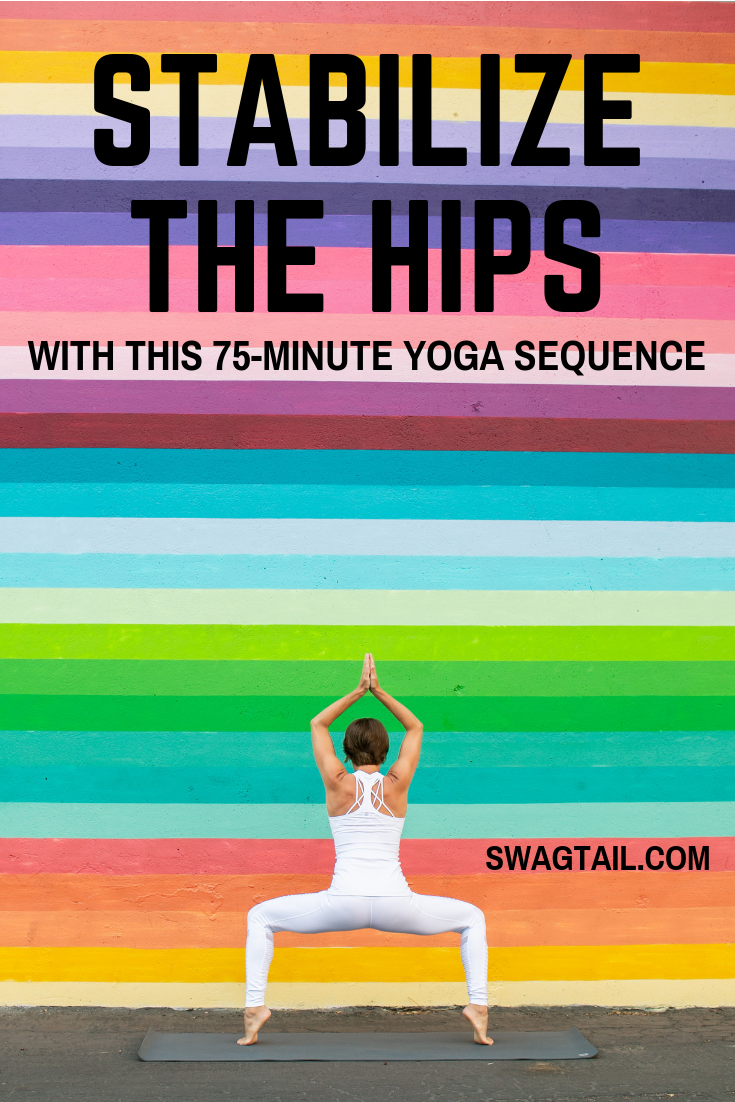 Strength, flexibility, and endurance are some crucial elements to a healthy body. Yoga often focuses on joint mobility, but stability is equally important. This is especially true in the hips, which are responsible for your ability to walk, climb stairs, and generally move around throughout the day. Without stability in this area, you are more prone to hip, knee, and ankle injuries. And, you’re less likely to remain balanced and grounded. This 75-minute yoga sequence helps you to stabilize the hips–and prevent these unwanted side effects of weak hips.
Strength, flexibility, and endurance are some crucial elements to a healthy body. Yoga often focuses on joint mobility, but stability is equally important. This is especially true in the hips, which are responsible for your ability to walk, climb stairs, and generally move around throughout the day. Without stability in this area, you are more prone to hip, knee, and ankle injuries. And, you’re less likely to remain balanced and grounded. This 75-minute yoga sequence helps you to stabilize the hips–and prevent these unwanted side effects of weak hips.
For many years of my youth–even through my senior year of high school–I played soccer competitively. This sport requires quick movements, fast reactions to changes on the field, and long hours of training. We ran, tackled, jumped, and ran some more. I didn’t practice yoga at the time, but I did work with personal trainers to prevent injury. Much of the work we did was to stabilize the hips–and thankfully, it worked!
But the hours seated in college lectures and then behind a computer as a writer easily offset my previous training. Despite the hour or two of yoga postures on my mat, I’d go back to a sitting position for hours on end.
You–and many of your clients–might also find this to be true in your daily lives. Unfortunately, sitting weakens the glutes and shortens the hip flexors. Both of these hips muscles are necessary to generate appropriate power from the hips and move efficiently.
In addition to moving more throughout the day, and working from an ergonomic chair nowadays, I often practice specific yoga sequences to stabilize the hips. The 75-minute class below is one of them! Enjoy!
Photo Credit: Diane Nicole Photography
MAIN POSE = STANDING FIRE HYDRANT POSE
If Ardha Uttanasana and Utthita Padangusthasana had a baby, it would look like standing fire hydrant pose. Since there are so many great variations of postures today, it’s nice to take a moment to honor their roots.
Let’s look at each parent respectively for their contribution. Ardha Uttasana requires lengthen in the entire back line of the body, especially the hamstrings. It also involves a strong core to elongate the spine against gravity. And, the shoulder blades move down the back and the collarbone remains broad–both actions that keep the heart open.
Then, you have Utthita Padangustasana, which involves balance (since you’re standing on one leg). This posture also requires adductor muscles to lengthen and hip stabilizers to kick on with their strength. This latter group, which involves the gluteus medius, gluteus maximus, piriformis, and deep core muscles, all get activated in this posture–both in the standing leg that provides support and the lifted leg as it abducts to the side.
Thus, the entire 75-minute sequence below is designed to address these main aspects of the body. Below you’ll find the Hatha Sequence, but you can also download my one-page sequences that include both the Hatha and Vinyasa variations.
Suggested Props: A block and a blanket
THE WARM-UP
(1) SAVASANA
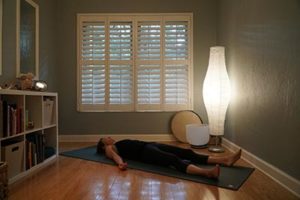 Purpose: Tap into the natural alignment of the spine.
Purpose: Tap into the natural alignment of the spine.
Additional Details: Invite students to focus on the heaviness of the pelvis as it is supported by the ground. Encourage them to observe any sensations around the hips and pelvis due to their lifestyle off of the mat.
Length: 3-5 minutes
(2) APANASANA + HIP CIRCLES
Purpose: This begins to loosen the low back and mobilize the hip socket.
Additional Details: Students can keep the stationary leg bent, or extend it for a deeper stretch.
Length: 1-2 minutes each side
(3) RECLINED PIGEON
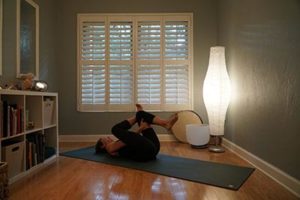 Purpose: The goal is to bring awareness to the piriformis and outer hip musculature. Taking a few deep breathes here will do this.
Purpose: The goal is to bring awareness to the piriformis and outer hip musculature. Taking a few deep breathes here will do this.
Additional Details: Students can keep the stationary leg bent, with the foot on the floor, to make the pose easier.
Length: 1 minute each side
(4) HAPPY BABY
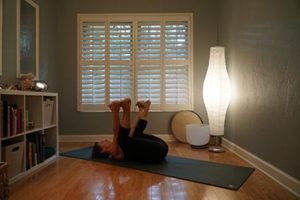 Purpose: Ananda balasana further explores space in the low back, while beginning to open up the adductor muscles.
Purpose: Ananda balasana further explores space in the low back, while beginning to open up the adductor muscles.
Additional Details: Knees can hug out to the sides, or armpits, to make it easier. Then, rock and roll to table top position.
Length: 1 minute
(5) FIRE HYDRANT POSE
Purpose: Taking this posture from an all fours position gives more support for the core and spine. Plus, it builds the muscle memory for what’s to come later in class, namely abduction of the hip in the lifted leg. This strengthens glute medius, glute minimus, and tensor fascia lata (TFL).
Length: Hold 30-45 seconds on each side.
(6) ADHO MUKHA SVANASANA
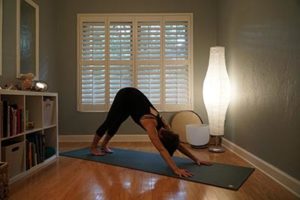 Purpose: Down dog begins to lengthen the entire back line of the body, while building heat and strength in the quads and upper body.
Purpose: Down dog begins to lengthen the entire back line of the body, while building heat and strength in the quads and upper body.
Length: Hold for about 1 minute.
BUILD HEAT
(7) SURYA NAMASAKARA A
Purpose: This full body movement builds heat everywhere in the body
Additional Details: If you want to slow it down even further, take a few extra rounds of Shalabhasana (after chaturanga and before up dog).
Length: 3 cycles
(8) SLOW FLOW 1
- 8A
- 8B
- 8C
- 8D (face back of mat)
- 8D (face back of mat)
- transition
- 8E
- 11G
Purpose: While you might opt for 3-5 rounds of Surya Namaskara B in a vinyasa class, this sequence of postures will also build heat in the legs and open the hips. From a forward fold position, step back and begin the mini flow below.
Postures:
- (8A) Runners lunge: to warm up hip flexors and quads
- (8B) Hanuman prep: to lengthen the hamstrings
- (8C) Parighasana (or gate pose): to lengthen and strengthen the side body
- (8D) Cat/Cow: for spinal mobility
- (8E) Ardha Uttansana: to lengthen the back body and strengthen the core
- (8F) Uttanasana: to rest, and lengthen the entire back line.
Length: About 5 minutes each side
(9) CHAIR POSE HOLDS
Purpose: Further build heat in the hips and quads.
Length: Take 30-60 seconds in utkatasana and then one minute in a low chair, or what is also known as bear pose now.
(10) VIRABHADRASANA B
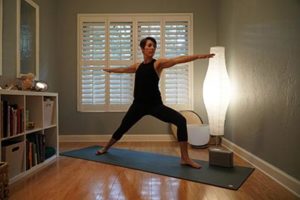 Purpose: Warrior 2 builds more heat in the hips. It also invites the strength of the abductor on the front leg to kick in (which simultaneously lengthens the inner thigh on that front leg).
Purpose: Warrior 2 builds more heat in the hips. It also invites the strength of the abductor on the front leg to kick in (which simultaneously lengthens the inner thigh on that front leg).
Additional Details: Step forward and fold to Uttanasana between sides.
Length: 1 minute each side
(11) SLOW FLOW 2
- 11A
- 11B
- 11C
- 11D
- 11E
- 11F
- inhale
- exhale, then inhale up
- 11G
Purpose: This is a sequence of postures to lengthen the adductors while still building heat in the lower body. You’ll notice all of the postures work to either lengthen the hamstrings, abduct the hips, or both.
Postures:
- (11A) Reverse warrior: Hold 1 minute.
- (11B) Warrior 2: One breath to ensure front knee tracks over front ankle.
- (11C) Trikonasana: Hold for 1 minute.
- (11D) Five Pointed Star, or utthita tadasana: 1 breath to transition and set the feet.
- (11E) Horse stance, or goddess pose: Any arm variation is fine. Hold 1 minute.
- (11F) Prasarita Padottanasana A: Hold for 1 minute, focusing on length in the spine, and shoulders going away from the floor.
- (11G) Back to Tadasana at the front of the mat.
(12) REPEAT 11 on the second side.
PEAK POSE
(13) STANDING FIRE HYDRANT POSE, ROUND 1
Purpose: Round 1 is designed to utilize strength in the hip stabilizer muscles on their own. This is true in both the standing leg and the lifted leg.
Additional Details: USE THE WALL, OR A BLOCK, to bring the floor up to you if the deeper, folded version is inaccessible. The focus is meant to be on the hips, NOT STRAIN THE BACK.
Length: 30-45 seconds each side, then fold in Uttanasana to rest.
(14) STANDING FIRE HYDRANT POSE, ROUND 2
Purpose: Round 2 can be a repeat of round 1. OR students are invited to grab the right big toe with the right hand and lift the leg out to the side. This amplifies the strength needed in the standing leg to remain balanced. For the second side, the left hand would hold the left big toe.
Additional Details: Again, keep your focus on the hips and take any low back strain out of the equation.
Length: 30-45 seconds each side, then fold in Uttanasana to rest.
ESTABLISH EQUANIMITY & COOL DOWN
(15) PLANK + DOWN DOG
Purpose: These are balanced, symmetrical postures that encourage the lower and upper limbs of the body to work together once again.
Length: 1 minute
(16) HUMBLE WARRIOR
Purpose: This keeps a bit more heat in the body, while encouraging the mind to turn inward even further. This internal gaze will help focus the mind for the cooling portion of the class.
Length: 1 minute
(17) LOW LUNGE, HOLD
Purpose: The goal is to lengthen the psoas and quadriceps muscles worked throughout the class.
Length: Hold 1 minute in straight variation. Then, hold 1 minute in twisted variation (optional leg grab).
(18) PIGEON PREP
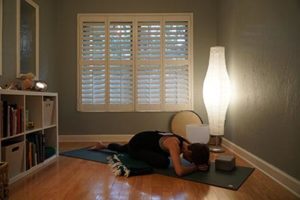 Purpose: It’s time to offer a big release in the piriformis and glute medius in this pigeon prep stretch. Students can repeat reclined pigeon from (3) or take this prone version to stretch the outer hips.
Purpose: It’s time to offer a big release in the piriformis and glute medius in this pigeon prep stretch. Students can repeat reclined pigeon from (3) or take this prone version to stretch the outer hips.
Length: 2 minutes
(19) REPEAT 16-18 ON THE SECOND SIDE
(20) BRIDGE POSE
Purpose: A gentle backbend will offer a contrast to the forward folds taken throughout the class.
Additional Details: Offer supported bridge to those who want to exert less energy, and urdhva dhanurasana for those who want more.
Length: 2-3 rounds, with 5 breath cycles in each round
(21) RECLINED SPINAL TWIST
Purpose: A gentle twist neutralizes any tension in the spine.
Length: 5 rounds of breath each side.
(22) SUKHASANA OR AGNI STAMBHASANA
Purpose: After so much work done to stabilize the hips, it’s time to yet again provide more release to those muscles. The first option is easier than the second in this case.
Additional Details: Encourage students to sit on blankets, especially if their knees are higher than their hips in Sukhasana.
Length: 1-2 minutes each side.
(23) PASCHIMOTTANASANA
Purpose: This symmetrical posture will be one last way to lengthen the entire back line of the body, while turning the focus even more inward. This is a fantastic prep for savasana.
Length: 1 minute
FINAL RELAXATION
Since your class will be seated, you might want to insert a bit of pranayama before moving into Savasana below. If going this route, I suggest a Vishama Vrtti, where there are unequal fluctuations of the breath. For example, breathe in with a count of 3, and exhale to a count of 5. Or, inhale to a count of 4 and exhale to a count of 6. Repeat for a minute or two to settle the mind on one point before reclining.
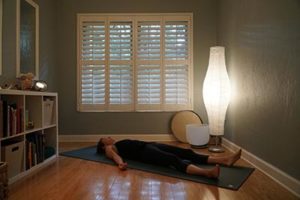 (24) SAVASANA
(24) SAVASANA
Purpose: Rest and absorb the changes of the practice. Allow the mind to be still, and be aware of newfound space in the body.
Length: 5-10 minutes
PUTTING IT TOGETHER
This sequence can be utilized in a fast- or slow-paced yoga class to stabilize the hips. By strengthening the gluteus medius and hip flexors, you add more support around the hip joint and make it easier to walk, climb stairs, and move around. This practice is also great to keep you grounded and balanced when life gets busy.
After you try this sequence or teach it in your classes, let us know how it goes. Tell us what you added or removed from the sequence to make it your own! Leave a comment below and share your insights! We love hearing them!!


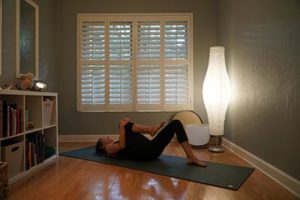
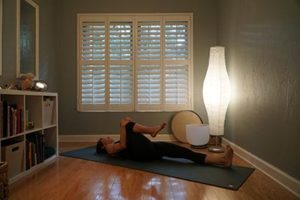
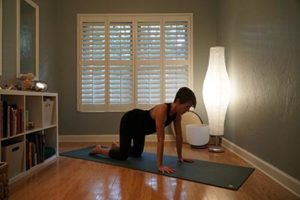
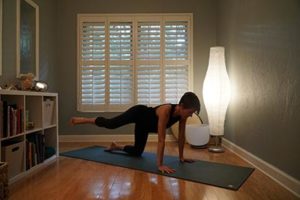
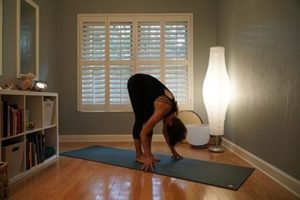
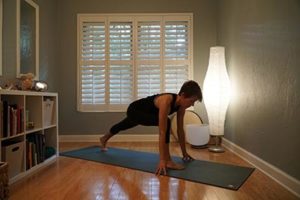
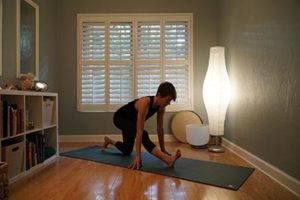
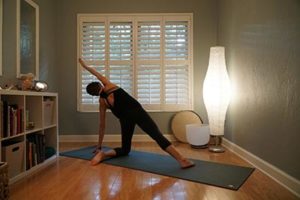
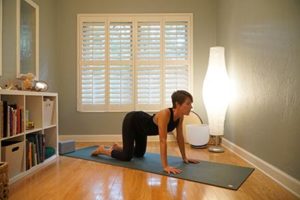
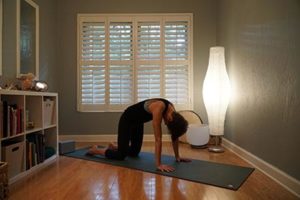
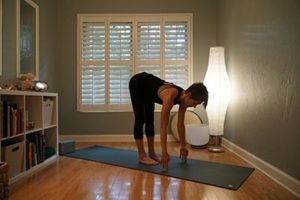
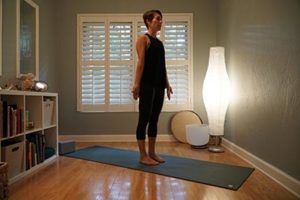
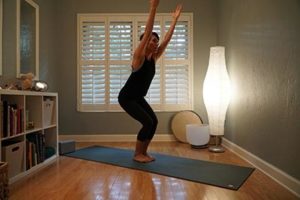
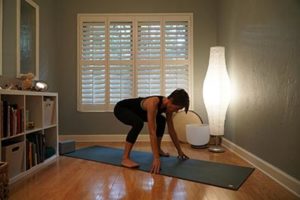
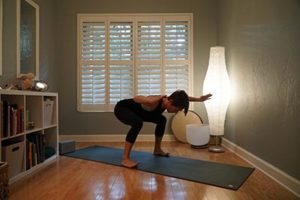
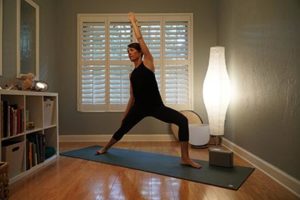
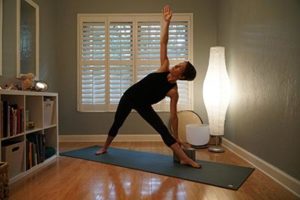
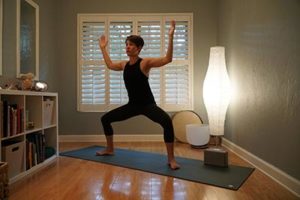
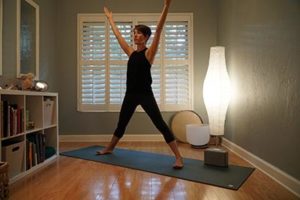
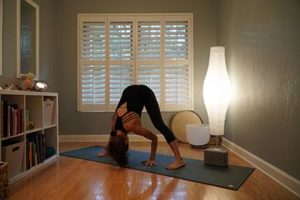
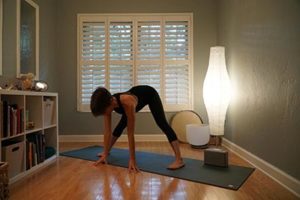
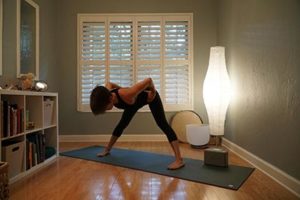
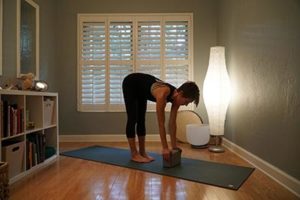
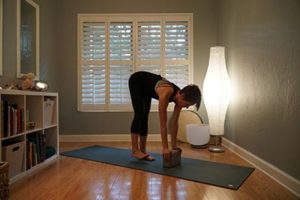
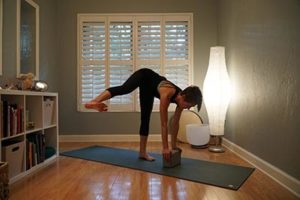
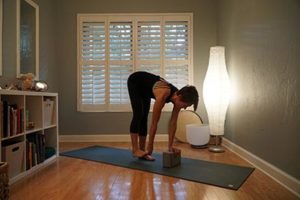
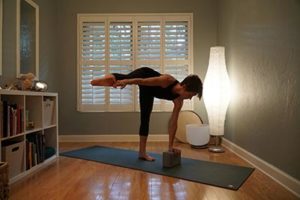
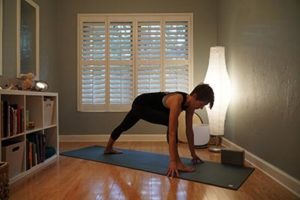
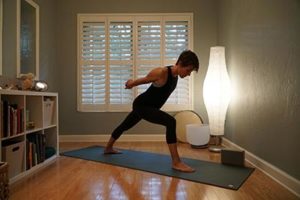
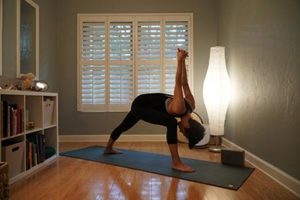
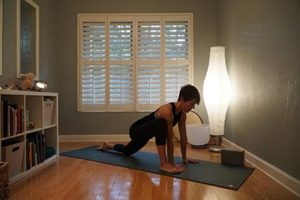
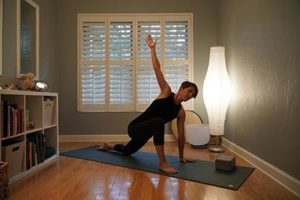
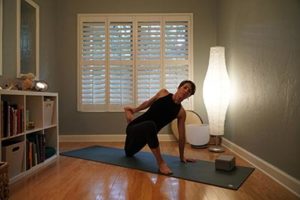
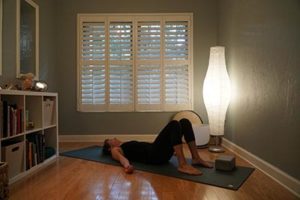
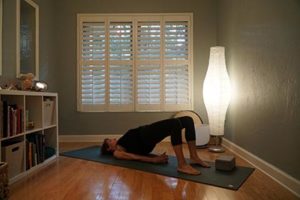
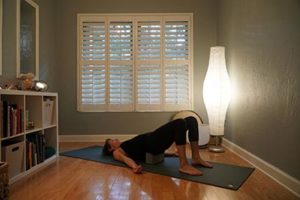
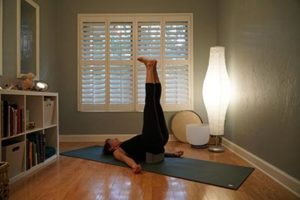
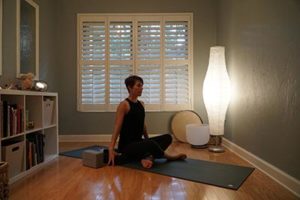
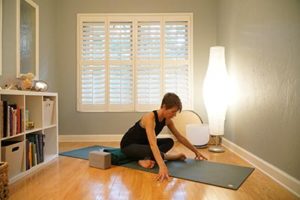
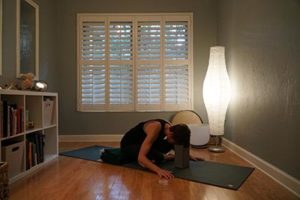
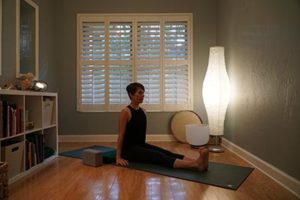
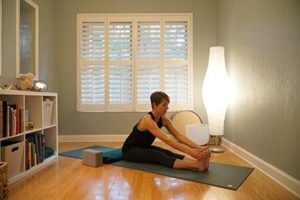
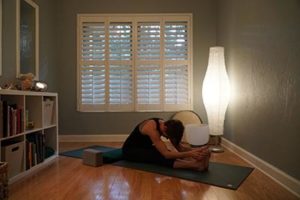
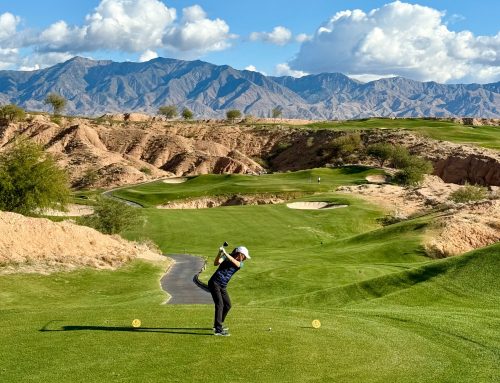
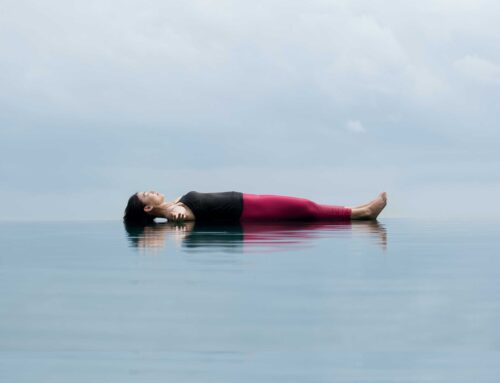

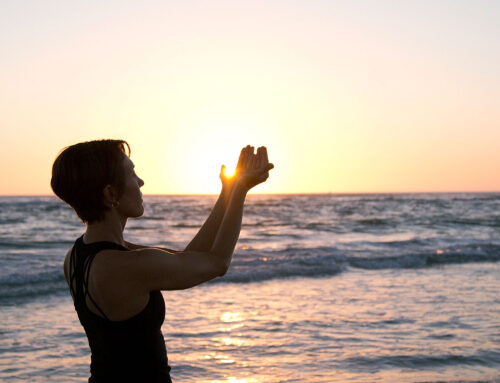
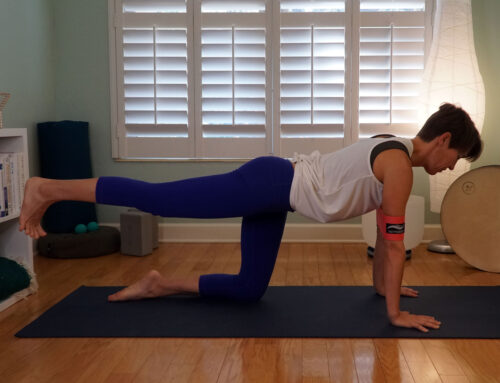
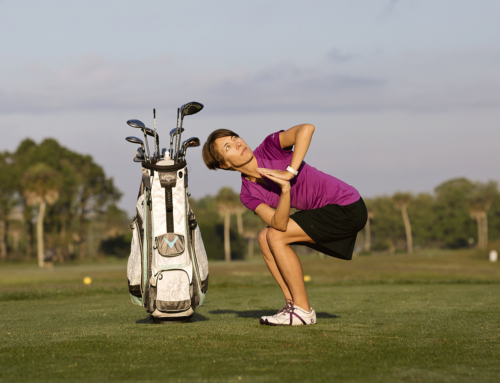
I love teaching your 75 minute classes. Do you have any others in off format that you could send to my email?
From one ocean loving yogis to another, I would be most grateful.
Hi Cat, I agree with you! 75 minute classes are so wonderful! I’ll look through my sequences folder and see what juicy flows I can send your way. I’ll send you a direct email so you can follow up with me by the end of the week in case I get distracted between now and then. BTW, where are you located? And your favorite ocean spot? So thankful you shared your insights, and happy I can be of service. Talk soon!